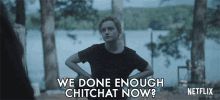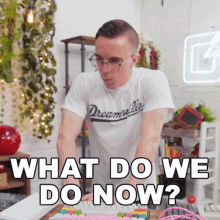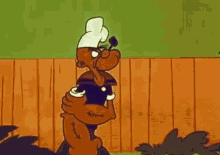oh ok sounds good too
One thing I am realizing (as I work on pre-subs for The Prince Who Turns Into A Frog) is that in the medium of film or video or whatever you want to call it, offers a distinctly different experience than reading a book.
Well, duh.
Reading, which is a learned activity, is different from seeing, which is an activity that is baked into the brain.
And putting words and pictures together in a subbed video creates a hybrid experience that can be very confusing if words and pictures both fail to give viewers clues about what is going on, and when, and where, and how, and why, and with whom.
It may just be my imagination, but in “the frog” story, episodes end with a “cliff-hanger” that is somewhere in a public environment–and it’s late afternoon, evening, or night.
And episodes begin in a private environment where the previous episode is re-capped (re-capitulated), sometimes just by characters having a conversation and sometimes with flashbacks.
(I must confess to being overwhelmed by the number of flashbacks in “the frog” story.)
With a novel, if a reader forgets what went on in previous chapters, they can just pick up the novel, flip around for a few minutes, read stuff, say, “Oh, right,” and go on.
In a K-drama, if that happens, people get cranky. If it happens too often, people stop watching.
Maybe ONE lesson to take from Thai lakorns is a variation on the novelist’s challenge: “You have fifty pages to convince a reader to read the next fifty pages.”
In screen time, fifty pages of a TV or movie script equals about fifty minutes of “stuff” (whether it is dialog, car chases, flashbacks, dream sequences, etc.). These days, there are half-hour and even fifteen-minute episodes of different dramas on Viki. So, in that situation, fifteen pages of script might be all a writer or writers have to convince viewers to watch the next fifteen minutes.
ANOTHER lesson to learn from Thai lakorns might be:
Once you have a crowd following your story, make sure on a regular basis to stop and make sure everyone is keeping pace.
I don’t know to what extent lakorns are similar to American soap operas, but some American soaps have been running for twenty years or more, and the dialog is not always deep. And the story for a given day has to take care of business in between commercials.
So relying on some formulas–regarding reminders about plot development and character development–helps tell a story well but quickly.
For “our” Viki Original, we have established, I believe, what types of plot and character development we don’t want.
But it seems we are still somewhat debating how long each episode should be, how many episodes there should be, what kind of a hook we need to draw people in, and what road signs or rest areas we should provide to keep people aware and interested.
My view of things is that we do not need to compete and try to whack out sixteen hour-long episodes. If we take a webtoon approach, we could do five beautifully turned out half hour episodes to tell a simple tale. And if that turns out well, then do a second five-part series.
It’s under-promising and over-delivering rather than over-promising and under-delivering.
We definitely need to take a leap of faith, and spin out the tale we have to tell, ![]()
![]()
![]() the synergy we have for this tale is high, and very, very good. I like the idea you mapped.
the synergy we have for this tale is high, and very, very good. I like the idea you mapped.
I have faith there’ll be a show of hands ![]() once we get started.
once we get started. ![]() We have an open invitation to all, to all
We have an open invitation to all, to all ![]()
![]() eyes reading this thread
eyes reading this thread ![]()
![]()
![]() you are invited !
you are invited !
KSKA has been outlined, and scripted from post number one, all the way to post 462.
We ask that you do the below, once you are fully aware of your role. Let’s let the below post exist on it’s own in full character. In other words, it’s that ![]() light on
light on ![]()
![]()
![]()
![]()
![]() once filming has commenced. So!
once filming has commenced. So!

tenor
Have I missed casting while I was out eating Tteokbokki??? And churros!
Nawww, it’s possible everyone is occupied with one thing, or another, or just don’t know where to take a bite out of 462 posts todate, if you add these last three, it’s 465 ![]()
And here’s 466.
An Incurable Case of Love is set in Tokyo. It shows one particular Shinto shrine that all the characters seem to turn to for divine guidance, for fortunes, for lucky charms.
It has scenes set in the Tokyo airport that handles mostly in-country flights and the airport that handles mostly international flights. It has scenes in upscale restaurants and casual bars. It contrasts self-made business people with old money millionaires.
It shows various attitudes toward dating and mating ranging from the omiai through love at first sight to living together (and obviously relying on but not mentioning birth control).
The look of characters, the styles of clothing, the layout of apartments, and the Japanese way of channeling the urge to merge . . . all very good fuel for the creative fire.
I find it funny that the FL and the ML represent the benign and malign forces that Shintoism seeks to cooperate with.
Sakura Nanase is “Miss Hero” who fights against the “Devil Doctor” for the right to become a nurse who wants to heal body and soul, and Tendo Kairi (called “Maoh” or “devil”) )is a cardiac surgeon who daily confronts the dark and bloody world of the damaged heart.
She dresses in pink, white, and grey; he dresses (minus his lab coat) in mostly black.
She is simple and harmless, Amaterasu, goddess of light and air, he is complicated and dangerous, the Demon Lord who controls the earth and the forces of death and darkness.



And HOT ![]()
Oops! Wrong Thread -
As she runs AWAY!
I discovered today that, back in 2010, a man created a script template for use with what was then called Open Office, a free word processing suite designed to emulate, without risking copyright infringement, the best of Word and WordPerfect.
It has been largely superseded by Libre Office (which I use and like very much).
It is NEVER easy to simply locate and ■■■■■■■■ templates and extensions and whatnot for Libre Office, but I found the script templates and dowloaded them.
There is one for writing a screenplay, one for writing a sitcom, one for writing a stage play, and (I think) one for writing a commercial.
Below are screen caps for the sitcom template:
I don’t know how many Badgers are familiar with Libre Office or any other free version, but it seems to me that using this free template created by a professional scriptwriter would be extremely beneficial.
I believe there is a version that can be used with Windows as well. Information about where to ■■■■■■■■ the template is on the cover page, I think.
This template provides a structure we don’t have to worry about developing, and it would be excellent training to review any K-drama to see how the elements of a script translate into a visual experience.
There is a learning curve to the scriptwriting template I found online. However, I managed this evening to write an example of a “cold opening” for KSKA. Can someone refresh my memory about how to make documents available for review in a discussion thread?
I fell asleep on the sofa about nine, woke up at eleven, cleaned up the kitchen from supper, took some laundry down to the basement, and started writing about 2:30 AM my time. It’s now about 4:30 AM my time. I wrote just over four pages. Maybe four and a third pages.
If it’s a G-drive doc, you can post the link here after setting the accessibility to “Anyone with a link”
I doubt you can attach docs directly from your computer to here. All the Viki-related docs I’ve ever opened/posted have been Google Drive docs
Here is a “cold open.”
There is some “placeholding” text in brackets that can be ignored. And some formatting stuff that doesn’t appear in the version I see. This is probably because the template has embedded coding or something like that.
And. Sigh. Because of formatting oddities, the cold open is eight pages long in Google Docs instead of five in Word.
But the idea is that everything looks like a script for a cold opening–which I think is the way to whack people on the head and rivet their attention.
Having considered exactly what it is we are trying to accomplish with our creative amazingness, I am tending to think that a sitcom format is not exactly what we are after. If we were doing something like a family drama that tends to have lots of scenes set in a “typical” home that is obviously a set on a sound stage . . . then all the stuff in the template about scenes and how they are accounted for and how many different cameras there are and whatnot . . . that’s not what we want because KSKA is conceptually more (IMHO) like a movie.
Ultimately, the format used now doesn’t really matter in terms of finicky formatting details. The idea is to get something that is well-formatted overall AND that has good, agreed upon content.
The key is getting that content squeezed out of . . . our genius-ness.

(Giphy)

The excitement is returning, ![]() I can’t wait for everyone to take a peek at the latest script (◠‿・)—☆ in post 472!!
I can’t wait for everyone to take a peek at the latest script (◠‿・)—☆ in post 472!! ![]()

We are back in business! ![]()
![]()
![]()
![]()
![]()
![]() !!
!!

I would like to reiterate: five episodes of half and hour each. Consider that a rough draft.
Then, once the fussin and fighting and throwing of snax is over regarding characters, costumes, motivations, appearance, cultural confusions, tropes, and what have you . . .
Consider how each of five scripts might be divided into ten and expanded to an hour each.
And the contributions can be major, minor, from one person, from several.
Also, important to track who contributes what and note what elements might cause someone to wonder about plagiarism.
Tropes aren’t plagiarism. Taking someone else’s script and changing a few things here and there is.
I believe we have a unique story line, however you want to slice it, but there’s always somebody ready to whine.
When I was in grad school. spending twelve hours a day at exam time with studying and doing final papers and whatnot, there was always some well-meaning but clueless person who whined: “Gee, I wish I could spend all day lolling around reading. You’re so lucky.!”
There are people who are . . . gifted in other ways? . . . who cannot conceive that something effortless and stunning is the result of agonizing and banging one’s head against the wall. It has to be the result of plagiarizing from someone smarter. Because if they can’t do it, neither can we.
Jacques Maritain was a Roman Catholic philosopher I learned about as an undergrad. He passed away my second year in school. He wrote about aesthetics, and I was captivated by his view that the simplest and most effortless-looking works of art were usually the product of intense thought, preparation, work, revision.
We need to be ready to stand against all doubters–including ourselves–when it comes to skepticism about the value of our efforts.
I am constantly pinching myself and asking what perfect storm of events brought so many freaking genius creatives together in this corner of the Viki-verse. What were the odds?
Better than one OSPD-nim winning the lottery without magical interference.
Truly, truly . . .

(Giphy)
Ha! ![]() We’ll show 'em!
We’ll show 'em!

wait so what about the previous script we had started? how do we integrate the two?

Through collaboration. Integrate what needs to be integrated, and let what stands alone stands alone, this is achievable, once you’ve collaborated.
Everything is open.
In my experience, which admittedly is not much, there are ideas that galvanize people into immediate creative productivity, and there are ideas that are fascinating, but they lead to OTHER ideas, and it’s those other ideas that lead to immediate creative productivity.
So, integrating stuff, yes. If the different types of stuff can co-exist, fit together, and make sense, that makes sense.
Whatever we have already that keeps popping up again and again in someone’s mind as MUST BE PART OF THE STORY . . . well, argue for that.
But hesitating to get started because of a concern that everything “should” fit together perfectly or consistently the very first time . . . that is a perfect formula for nothing getting done.
The thing I keep hearing and reading about writing in general and script writing in general is that there has to be risk-taking, passion, and a willingness to leave behind a good idea for a really great one.
But! There are ideas which are good that become great when they are placed in a new context.
The ultimate question is: what are we individually and in the aggregate willing to fight for?
There is a version of a cold open in existence. Let’s call it a door that has opened into a particular world of imagination.
Maybe it’s not the best door. And maybe it will need to be rebuilt later on. But now that the door has been opened, what comes next? Integrating some things, setting some things aside, creating new things?
What comes after the cold open, which is the hook to draw viewers in?
The opening credits for the show. Then what?
“Three months earlier.”
“A year earlier.”
“Summer 2010.”"
And a plausible explanation of what the heck happened in the cold open. But not THE explanation because that is what will unfold gradually.
What do we already have that can be used to create that plausible explanation?
Time to rally the thinkers and planners who are lollygagging around the stacks of snax which have started to spill out into the hall way of the Badger Productions building, especially @ninjas_with_onions, @kdrama2020ali, @mas4, @shraddhasingh, @padmalayag, @angelight313_168, @zyxw, and others who at one time or another have asked, “What’s going on here?”
What started out as a sort of fluffy party game has the possibility of turning into a serious creative endeavor. Not everyone will want to commit time and effprt beyond dropping in to keep in touch with Viki friends on this thread, but those who do want to be consistently involved for a fairly long haul can be of immense benefit to each other and to this still-functional, still-breathing dream of creating something unique.
Food for thought below about how to pick up a pencil, sit down in front of a computer, clear a schedule, and take another step . . .
Thas jes lervly, hunty! (Madea talk for “that’s just lovely, honey!”)

(Giphy)
![]() it! Yup! Those videos hit the nail on the head. Really good post ups!
it! Yup! Those videos hit the nail on the head. Really good post ups!![]()
![]()
![]()
![]()
If you consider yourself part of Badger Productions, you should not miss the above two short videos in post #478 above ![]() a’hem! including you @my_happy_place, and @porkypine90_261
a’hem! including you @my_happy_place, and @porkypine90_261 ![]()
![]()
![]()
![]()
![]()
![]()









